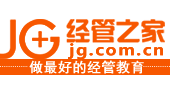关于本站
人大经济论坛-经管之家:分享大学、考研、论文、会计、留学、数据、经济学、金融学、管理学、统计学、博弈论、统计年鉴、行业分析包括等相关资源。
经管之家是国内活跃的在线教育咨询平台!
经管之家新媒体交易平台
提供"微信号、微博、抖音、快手、头条、小红书、百家号、企鹅号、UC号、一点资讯"等虚拟账号交易,真正实现买卖双方的共赢。【请点击这里访问】
论文
- 毕业论文 | 写毕业论文
- 毕业论文 | 为毕业论文找思路
- 毕业论文 | 可以有时间好好写 ...
- 毕业论文 | 毕业论文如何选较 ...
- 毕业论文 | 毕业论文选题通过 ...
- 毕业论文 | 还有三人的毕业论 ...
- 毕业论文 | 毕业论文答辩过程 ...
- 毕业论文 | 本科毕业论文,wi ...
考研考博
- 考博 | 南大考博经济类资 ...
- 考博 | 考博英语10000词汇 ...
- 考博 | 如果复旦、南大这 ...
- 考博 | 有谁知道春招秋季 ...
- 考博 | 工作与考博?到底 ...
- 考博 | 考博应该如何选择 ...
- 考博 | 考博失败了
- 考博 | 考博考研英语作文 ...
留学
- 日本留学 | 在日本留学心得
- 日本留学 | 日本留学生活必需 ...
- 日本留学 | 【留学日本】2015 ...
- 日本留学 | 日本海外留学8年来 ...
- 日本留学 | 日本留学费用_日本 ...
- 日本留学 | 求在日本留学的师 ...
- 日本留学 | 日本留学的有没有 ...
- 日本留学 | 日本留学
TOP热门关键词
只把第二和第三问的计算部分给出既可.谢谢大家,附件里是图表信息Casetitle:SiemensElectricMotorWorksRequirements:Readthecasestudyandanswerthefollowingfivequestions.Notethat‘DM’standsfortheGermanmonetar ...
扫码加入财会交流群 |
只把第二和第三问的计算部分给出既可.谢谢大家,附件里是图表信息
Case title: Siemens Electric Motor Works Requirements:Read the case study and answer the following five questions. Note that ‘DM’ stands for the German monetary unit i.e. the Deutsche Mark.
1. Describe the main features of the old and new costing systems at Siemens. Why did the old costing system at Siemens tend to give inaccurate information relating to the company’s low-volume customised motors?
2. Calculate the cost of the five orders (A to E) in Exhibit 3 under the old and new costing systems.Discuss your results.Hint: First calculate the revised cost of processing an order and handling a special component.
3. Calculate the old and new costs of the five orders if each order consists of 10, 20 or 100 units.
4. Does the new costing system support Siemen’s new strategy in ways that the old system could not?Is Mr Karl-Heinze Lottes over-estimating the value of the new costing system?Discuss.
5. Why is cost control important in a large multi-national company like Siemens?
Siemens Electric Motor Works
Ten years ago our electric motor business was in real trouble. Low labor rates allowed the Eastern Bloc countries to sell standard motors at prices we were unable to match. We had become the high‑cost producer in the industry. Consequently, we decided to change our strategy and become a specialty motor producer. Once we adopted our new strategy, we discovered that, while our existing cost system was adequate for costing standard motors, it gave us inaccurate information when we used it to cost our customised motors.
MR. KARL‑HEINZLOTTES, DIRECTOR OF BUSINESS OPERATIONS, EMW
SIEMENS CORPORATION
Headquartered in Munich, Siemens AG, a pro-ducer of electrical and electronic products, is one of the world's largest corporations. Its revenues totalled DM51 billion in 1997, with roughly half this amount representing sales outside the Federal Republic of Germany. The Siemens organization is split into seven major groups and five corporate divisions. The largest group, Energy and Automa-tion, accounts for approximately 24% of total revenues. Low--wattage alternating current (A/C) motors are pro-duced at the Electric Motor Works (EMW), which is part of the Manufacturing Industries Division of the Energy and Automation Group. High‑wattage motors are produced at another facility.
THE ELECTRIC MOTOR WORKS
Located in the small town of Bad Neustadt, the original Siemens EMW plant was built in 1937 to manufacture refrigerator motors for Volkskuhlsch-raenke(people's refrigerators). Less than a year later, Siemens halted the production of refrigerator motors and began to produce electric motors for other applications. At the end of World War 11, the Bad Neustadt plant was the only Siemens factory in West Germany capable of producing electric motors. All the other Siemens production facilities had been completely destroyed or seized by Eastern Bloc countries. After an aggressive rebuilding program, Bad Neustadt emerged as the firm's primary produc-er of electric motors.
In the early 1990s, EMW produced about 200 different types of standard motors, at a total annual volume of around 230,000 motors. Standard motors accounted for 80% of sales volumes, while the remain-ing 20% consisted of customised motors. The production process was characterized by relatively long runs of a single type of motor. Because identical motors were used by a wide range of customers, standard motors were inventoried and shipped as orders were received. The market for standard A/C motors was extremely competitive. The firm was under constant pressure to reduce costs so that it could price aggressively and still make a profit. Despite a major expansion and automation program begun in 1984, by the early 1990s EMW found it could not lower its costs sufficiently to offset the lower labor rates of its Eastern Bloc competitors.
CHANGE IN STRATEGY
An extensive study revealed that EMW could become a profitable producer of low‑volume, cus-tomized A/C motors. To help implement this strate-gy, the Bad Neustadt plant was enlarged and dedi-cated to the manufacture of A/C motors with power ratings ranging from 0.06 to 18.5 kilowatts. These motors supported a number of applications includ-ing automation engineering, machine tools, plastic processing, and paper and printing machines. For the new strategy to succeed, EMW needed to be able to manufacture efficiently a large variety of motors in small production runs. Between 1994 and 1996, EMW spent DM50 million a year to replace almost every machine on the shop floor and thereby create a production environment that could support its new strategy.
By 1997, production processes were highly automated with numerically controlled machines, flexible machining centres, and robotically fed pro-duction processes used throughout the factory. Large‑volume common components were manufac-tured using dedicated automated equipment, while very low‑volume components might be made in manual production processes. Where possible, flex-ible manufacturing was used to produce small--volume specialty components. While a normal an-nual production volume for common components might be 100,000 units, a single component could have up to 10,000 custom variations that might have to be produced one at a time.
To produce a custom motor, modifications were made to a standard motor design. This process involved determining where standard components could not be used. These standard components were then replaced by custom components that provided the functionality required by the end user.
EMW’s new strategy seemed to be successful (see Exhibit 1). Of a total of 65,625 orders accepted in 1998, 88% were for custom motors - 48% for only one motor; and 74% for fewer than five motors. But EMW’s high‑volume standard motors still accounted for almost half the total annual output of 630,000 motors.
CHANGE IN THE CALCULATION OF PRODUCT COSTS
EMW's product costing system assigned materials and labor costs directly to the products. Overhead costs were divided into three categories: materials -related, production‑related, and support related. Materials‑related overhead, containing costs associat-ed with material acquisition, was allocated to prod-ucts based on their direct materials costs. Production--related overhead was directly traced to the 600 pro-duction cost centres. A production cost centre had been created for each type of machine. Cost centres with high labor intensity used direct labor hours to allocate costs to products. For centres with automat-ed machines whose operation required few direct labor hours, machine hours was used as the alloca-tion base. Support‑related overhead was allocated to products based on manufacturing costs to date: the sum of direct materials and direct labor costs, materials overhead, and production overhead. The breakdown of each cost category as a percent of total costs is shown in Table A (below).
Two years after the change in strategy, prob-lems with the old costing system started to become appar-ent. The old costing system seemed unable to capture the relationship between the increased support costs and the change in product mix. Management felt that most support costs related more closely to the number of orders received or the number of customized components in a motor rather than to materials expense or to the quantity of labor and machine hours required to build the motor.
Table A
| % OF TOTAL COSTS OVERHEAD RATE |
| Direct materials 29% |
| Direct labor 10 |
| Materials overhead 2 6% of materials cost |
| Production overhead 33 DM/direct labour hour or DM/machine hour (600 rates) |
| Support‑related overhead 26 35% of other manufacturing costs |
| Total 100% |
An extensive study was undertaken to identify the support costs that management believed were driven by the processing of orders and the handling of special components. Table B shows the costs that were most affected by the large increas-es in number of orders and number of different types of special components:
Table B
| Costs Related to Order Processing |
| Billing |
| Order Receiving |
| Product Costing and Bidding |
| Shipping and Handling |
| |
| Costs Related to Handling Special Components |
| Inventory Transfers |
| Purchasing |
| Receiving |
| Scheduling and Production Control |
| Technical Examination of Incoming Orders |
An analysis of the order processing costs re-vealed that the same resources were required to process an order of one custom motor as for an order of 200 standard motors. A similar analysis indicated that the number of different types of special compo-nents in each motor design determined the work-load for the departments affected by special compo-nents. The demand for work in these departments was not strongly affected by the total number of special components produced. For example, an or-der of five custom motors requiring 10 different types of special components per motor generated the same amount of work as an order of one custom motor with a design requiring 10 different types of special components. In 1999, the facto-ry used 30,000 different special components to customize their motors. The special components were processed a total of 325,000 different times for custom-ized orders.
The costs in each support department associat-ed with these two activities were removed from the support‑related cost pool and assigned to two new cost pools. Exhibit 2 illustrates, for 1999, the forma-tion of the two new cost pools. The first column presents total costs grouped by traditional costing system definitions. The new cost system removes DM6.3 million from engineering support costs, and DM27.0 million from administrative support costs. These expenses are then assigned to the new cost pools, DM13.8 million to order processing costs, and DM19.5 million to special components costs.
Exhibit 3 shows the cost build-up for five typical motor orders. The base motor cost includes direct materials and labor costs, materials and production overhead, and the portion of support overhead not assigned to the two new cost pools. To this base motor cost must be added the cost of processing the order, and the materials, labor, production over-head, and support overhead required for the special components.
EFFECT OF THE NEW COST SYSTEM
In 2000 EMW received close to DM1 billion in motor orders, accepted only DM450 million, and ran the factory at its full rated capacity. Mr. Karl‑Heinz Lottes, Director of Business Operations at EMW, commented on the role of the redesigned cost system in relation to the new strategy:
Without the new cost system, our new strategy would have failed. The information it generated helped us to identify those orders we want to accept. While some orders we lose to competitors, most we turn down because they are not profitable. Anyone who wants to understand the importance of the system can simply compare some typical orders costed with the old system with the costs produced by our new system
END OF CASE STUDY (Part A
「经管之家」APP:经管人学习、答疑、交友,就上经管之家!
免流量费下载资料----在经管之家app可以下载论坛上的所有资源,并且不额外收取下载高峰期的论坛币。
涵盖所有经管领域的优秀内容----覆盖经济、管理、金融投资、计量统计、数据分析、国贸、财会等专业的学习宝库,各类资料应有尽有。
来自五湖四海的经管达人----已经有上千万的经管人来到这里,你可以找到任何学科方向、有共同话题的朋友。
经管之家(原人大经济论坛),跨越高校的围墙,带你走进经管知识的新世界。
扫描下方二维码下载并注册APP

免流量费下载资料----在经管之家app可以下载论坛上的所有资源,并且不额外收取下载高峰期的论坛币。
涵盖所有经管领域的优秀内容----覆盖经济、管理、金融投资、计量统计、数据分析、国贸、财会等专业的学习宝库,各类资料应有尽有。
来自五湖四海的经管达人----已经有上千万的经管人来到这里,你可以找到任何学科方向、有共同话题的朋友。
经管之家(原人大经济论坛),跨越高校的围墙,带你走进经管知识的新世界。
扫描下方二维码下载并注册APP

您可能感兴趣的文章
本站推荐的文章
- 哲学名言 | 【独家发布】经典哲学名言
- 哲学书籍 | 求推荐一本讲人生目标的哲学书籍 ...
- 哲学书籍 | 经济人,开拓你逻辑思维的哲学书 ...
- 哲学书籍 | 哲学书籍
- 哲学书籍 | 哲学书籍
- 哲学书籍 | 哲学书籍
- 哲学书籍 | 经典的哲学书籍
- 哲学书籍 | 发22本经典的经济学及哲学书籍《 ...
人气文章
1.凡人大经济论坛-经管之家转载的文章,均出自其它媒体或其他官网介绍,目的在于传递更多的信息,并不代表本站赞同其观点和其真实性负责;
2.转载的文章仅代表原创作者观点,与本站无关。其原创性以及文中陈述文字和内容未经本站证实,本站对该文以及其中全部或者部分内容、文字的真实性、完整性、及时性,不作出任何保证或承若;
3.如本站转载稿涉及版权等问题,请作者及时联系本站,我们会及时处理。
2.转载的文章仅代表原创作者观点,与本站无关。其原创性以及文中陈述文字和内容未经本站证实,本站对该文以及其中全部或者部分内容、文字的真实性、完整性、及时性,不作出任何保证或承若;
3.如本站转载稿涉及版权等问题,请作者及时联系本站,我们会及时处理。



